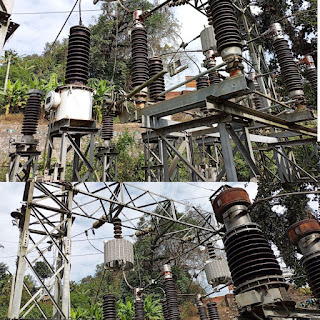In electrical power systems, potential transformers and current transformers ( CT and PT ) are two important types of transformers used for measurement and protection. Both PTs and CTs have similar functions, but they differ in their purpose, construction, and application. In this blog post, we will discuss the key difference between CT and PT and how they are used in power systems.
difference between ct and pt
Purpose:
The main purpose of a PT is to measure voltage, while the main purpose of a CT is to measure current. A PT steps down high voltage levels to lower, more measurable levels, while a CT steps down high amperage currents to lower, more measurable levels. CTs are used to measure current flowing through a circuit, while PTs are used to measure the voltage across a circuit.
Construction:
CT and PT differ in their construction. A PT consists of a primary winding and a secondary winding, while a CT also consists of a primary winding and a secondary winding. However, the primary winding of a CT is connected in series with the circuit being measured, while the primary winding of a PT is connected in parallel with the circuit being measured. The ratio of the number of turns in the primary winding to the number of turns in the secondary winding determines the ratio of the voltage or current in the primary circuit to the voltage or current in the secondary circuit.
Ratio:
The ratio of a PT is based on the ratio of the primary and secondary voltages, while the ratio of a CT is based on the number of turns in primary winding and number of turns in the secondary winding. The ratio of PT can be expressed as primary voltage divided by the secondary voltage, while the ratio of a CT can be expressed as the primary current divided by the secondary current.
Output:
The output of a PT is a voltage, while the output of a CT is a current. The voltage output of a PT is proportional to the voltage across the primary winding, while the current output of a CT is proportional to the current flowing through the primary winding.
Applications:
CT and PT have different applications in power systems. PTs are commonly used for metering and control purposes, while CTs are commonly used for protection and control purposes.
Applications of PTs:
PTs are used for a variety of applications in power systems, including:
Metering: PTs are used for metering voltage in power systems. They are often used in conjunction with instruments like voltmeters and wattmeters.
Control: PTs are used for control purposes in power systems. They can be used to control the voltage levels in a power system and to regulate the output of power generators.
Applications of CTs:
CTs are used for a variety of applications in power systems, including:
Protection: CTs are used for protection purposes in power systems. They can be used to provide overcurrent protection, ground fault protection, and differential protection.
Control: CTs are used for control purposes in power systems. They can be used to regulate the flow of current in a power system and to control the output of power generators.
Hence, CT and PT are both important types of transformers used in electrical power systems for measurement and protection. PT are used to measure voltage, while CT are used to measure current. They differ in their construction, ratio, and applications. PTs are commonly used for metering and control purposes, while CTs are commonly used for protection and control purposes. Understanding the difference between CT and PT is essential for the proper operation and maintenance of electrical power systems.







No comments:
Post a Comment
----Please share your opinion with us-----